On my farm, the story of keeping chickens has been full of surprises. I once remembered watching my daughter get chased outside near the coops, and she nearly screamed when the rooster tried to spur her. It was a frightened moment, and I’ll never forget how my son laughed and gave a funny quote about them acting like small suitors.
Over time, I remembered another snippet of advice my grandmother gave me, and though I had once forgotten, it truly motivated me. Some breeds such as Speckled Sussex or Rhode Island are less prone, but each rooster has its own habits, temperament, and behavior. Even when wounded, with a pail in my hands, I tried to walk across the pasture, only to feel the angry rush of an attack, and my eggs dropped from the basket.
Those periods of trial taught me that patience and rules are key to tame an aggressive rooster. The process can be difficult, but it is never impossible if you stay brave. My friend once raised a beloved rooster named Andrew, and though he was mean at first, she never grew disappointed.
Instead, she made steady maneuvers, faced the scary parts, and never stopped making suggestions for better care.
How to Tame a Rooster – Short Answer
Taming a rooster requires patience and calm actions. Start by showing dominance with firm steps, arm flaps, or even a bucket or branch to guide the rooster. If he tries to attack, remind him to surrender by using consistent actions. Over time, depending on the breed and aggression level, the process may need repetition. Consistency is key to gaining control, as firm but gentle actions, like a light boot strike, help calm him down. Patience and steady behavior will eventually lead to a tame rooster.
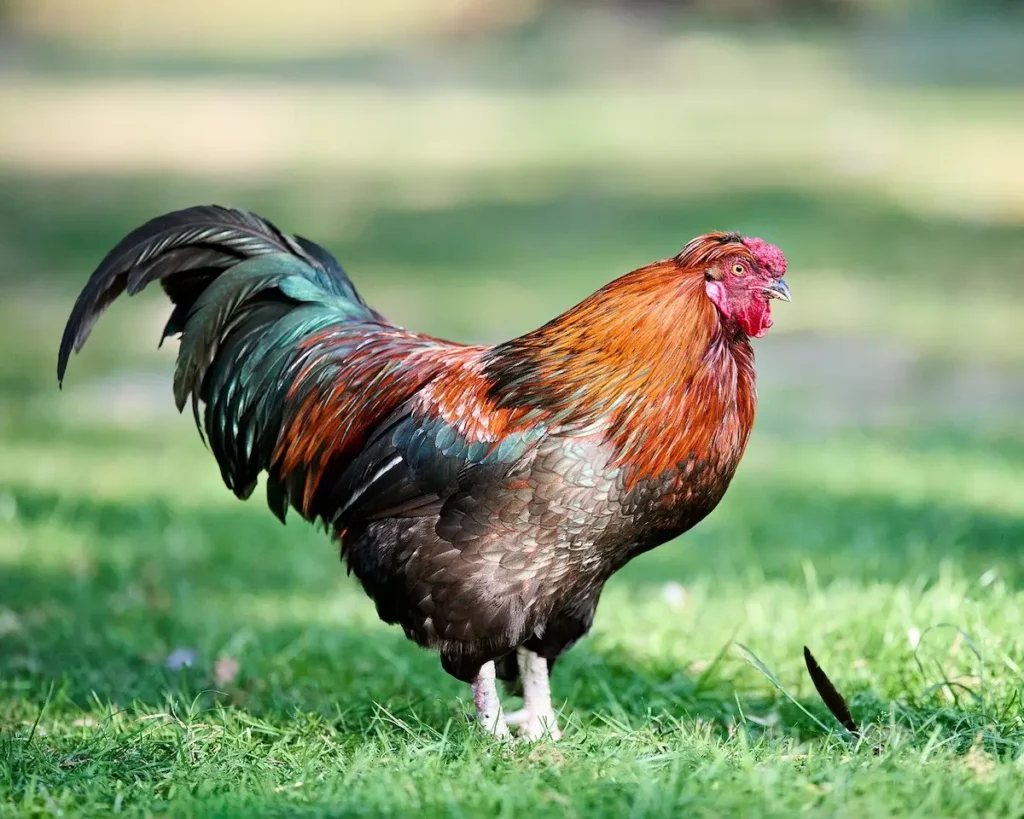
Over the length of weeks, the rooster’s temper softened, and his screaming turned into calm clucks. Whether you are tending hens, managing runs, or working with girls and family on the farm, the journey from angry to protective will always demonstrate how even a powerful rooster can change.
I once thought of westerns where cowboys faced wild animals, and it reminded me that taming is just about being stronger, not harsher. With patience, even the most scary rooster can eat calmly, be named with affection, and become truly safe for all.
Why Roosters Attack
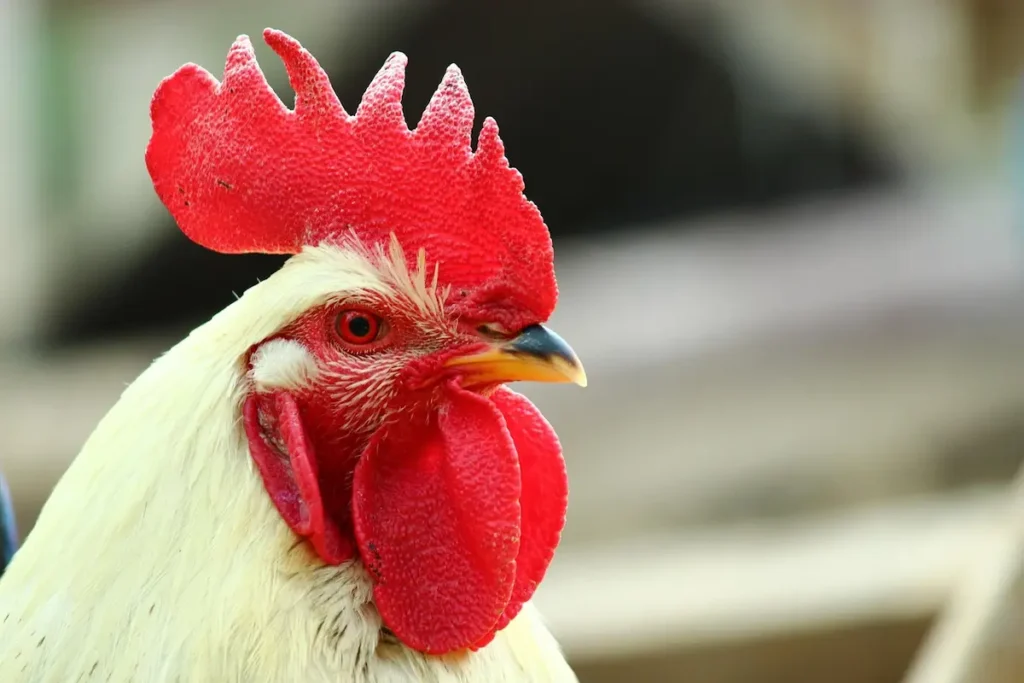
When a rooster becomes aggressive, it is often tied to the natural pecking order inside a flock of chickens. Some breeds are more defensive, and if you introduce a second bird into that space, the challenge can quickly escalate into a fight.
I was once shocked to see two roosters from the same hatching of a hen break the usual norm and refuse to surrender. In such cases, the one who runs, walks, or hides is seen as the loser, while the other acts as the boss.
Over the years, I’ve learned to warn myself and others never to act like a trespasser when entering the flock. Using a steady hand to guide their behavior, you can avoid injury and prevent unnecessary death. I try to raise them with calm acts of trust, always keeping in mind that sudden changes can disturb their balance.
The fact is, without timely intervention, dominance disputes can spiral out of control. A couple of smart interventions early on keeps harmony and shows that careful handling is the best way to tame.
Understanding Pecking Order & Dominance
On my farm, I quickly saw how chickens live in a social system where the pecking order rules everything. A rooster at the top of the flock will assert his dominance, while others may cower in the lower places of the station. If two roosters meet, they might fight or keep chasing each other until one takes a step back. Even the hens respect this order, and to keep balance you must act like the alpha and take full charge without being cruel, showing them you set the rules.
Partnership, Not Domination
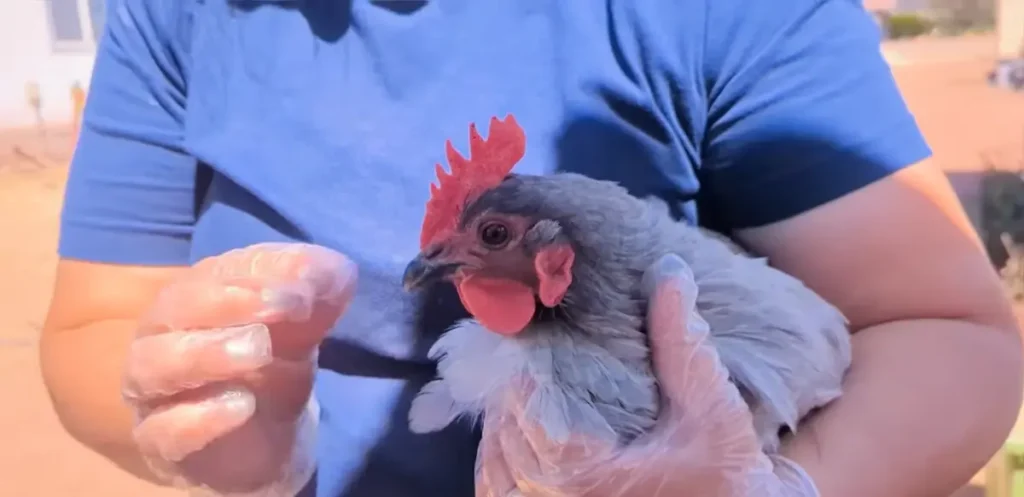
When I first worked with my rooster Quiggles, I noticed the real difference came from my approach. Instead of forcing domination, I focused on partnership, where his behavior could be guided through positive feelings. Just like training an untrained dog or calming a puppy that may bite or jump in excitement, the goal was to understand his perspective and what he truly wants.
A punk rooster may seem aggressive and might even try to hurt, but in a nutshell, the method is to show patience so that roosters learn to trust and follow calmly.
How Can I Make My Rooster Tame
When I first started teaching my rooster, I realized taming him was a steady process that required patience and calm steps. In the flock, a rooster may see you as a challenge, so you must be prepared to stand, stare, or even chase him if needed. By raising your arms, making a strong flap, and taking a firm step forward, you show that you are bigger, fierce, and not afraid.
Sometimes I used a bucket or branch as a guide when he tried to attack, reminding him to surrender and avoid repeated attacks. Even the way he starts pecking the ground, breaking eye contact, or looking aside shows he has submitted and accepted you as the head of the flock.
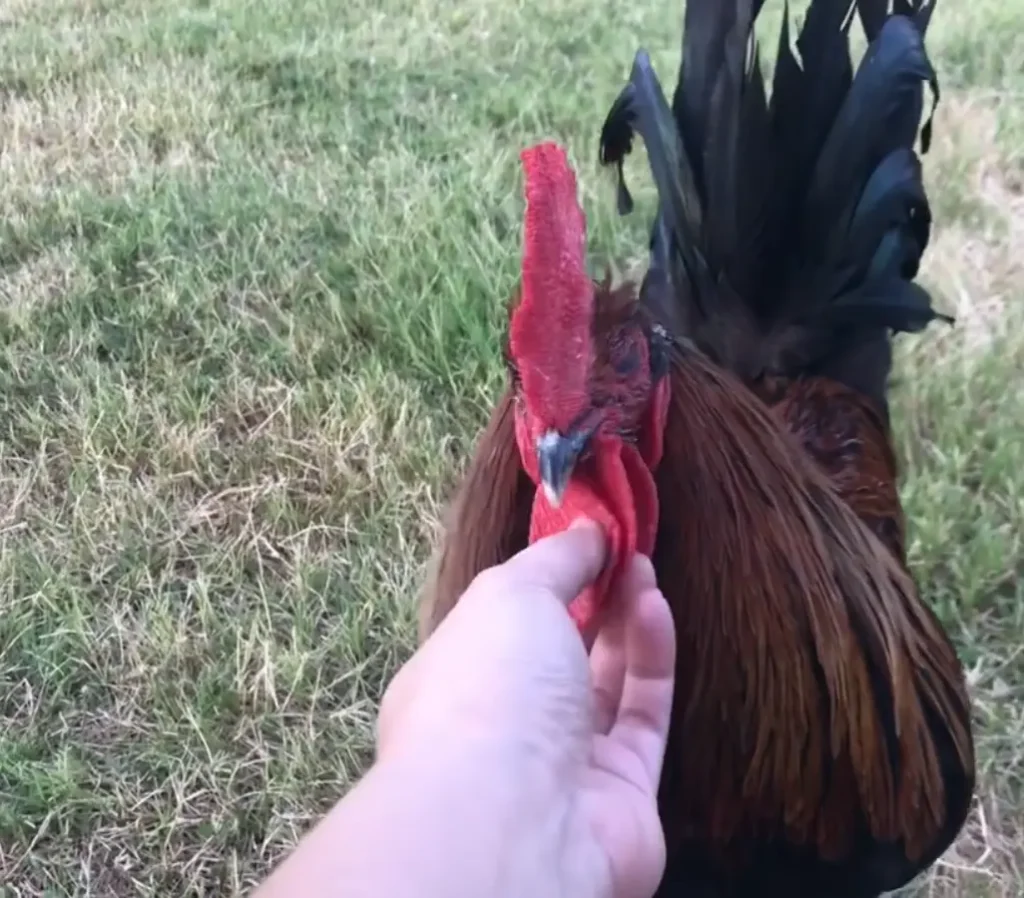
Over the years, I’ve seen that depending on the breed, age, and level of aggression, the taming process must be repeated several times. Some roosters will test boundaries with spurs or by charging, but consistency makes them calm down. Using a light strike with a boot on the ground or moving with purpose can stop running and help him understand his goal is not to be the boss.
In my backyard, it sometimes looked comical to be in a face-off with a ten-pound bird, but staying patient, showing steady behaviors, and not being scared is what finally led to a surrendered rooster.
When taming a rooster, the Barred Rock Rooster can show unique behaviors that require extra patience.
Handling Techniques for Taming
Catch and Hold
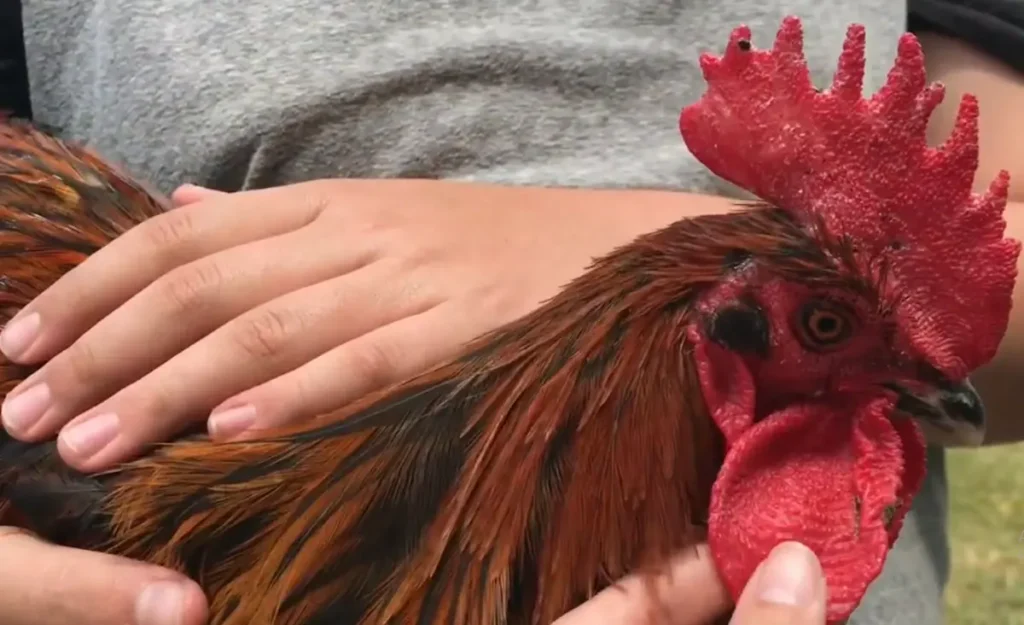
When I handle a rooster, I often catch him firmly with one hand and keep my stance steady to show control. A gentle but confident grip helps avoid fear, even if he tries to squirm or wiggle away. I sometimes guide his head downward using my fingers, which mimics the natural dominance he understands in the flock.
Hold for a Minute
Holding for a short minute, I stay calm and never use too much force, since the process is about respect, not causing hurt or pain. From my own experience with hens, chicks, and even a black feathered bird, frequent engagement with people made them more familiar and comfortable. I would pick them up while young, showing I was bigger and stronger without trying to humiliate them.
Release and Reset
Over time, their behavior improves as they learn the order, and even roosters begin to release resistance when the position is repeated. Whether you mount him in a safe squat with your backside low or simply walk calmly around, the shape of training lies in patience, as repetition will help him understand his role without leaving him scared.
Even if you’re working on taming a dominant rooster, breeds like the Plymouth Rock chicken—known for their calm and docile temperament—can make this process significantly smoother.
Protecting Yourself From A Rooster Attack
When dealing with an aggressive rooster, I stay confident and prepared, holding my arms outstretched to appear bigger and give a sharp stomp if needed. Wearing knee-high rubber boots keeps my legs safe, and I’ve found that keeping a post or digger near the chicken tractor is handy not just for snakes but also when a rooster tries to bite or attack.
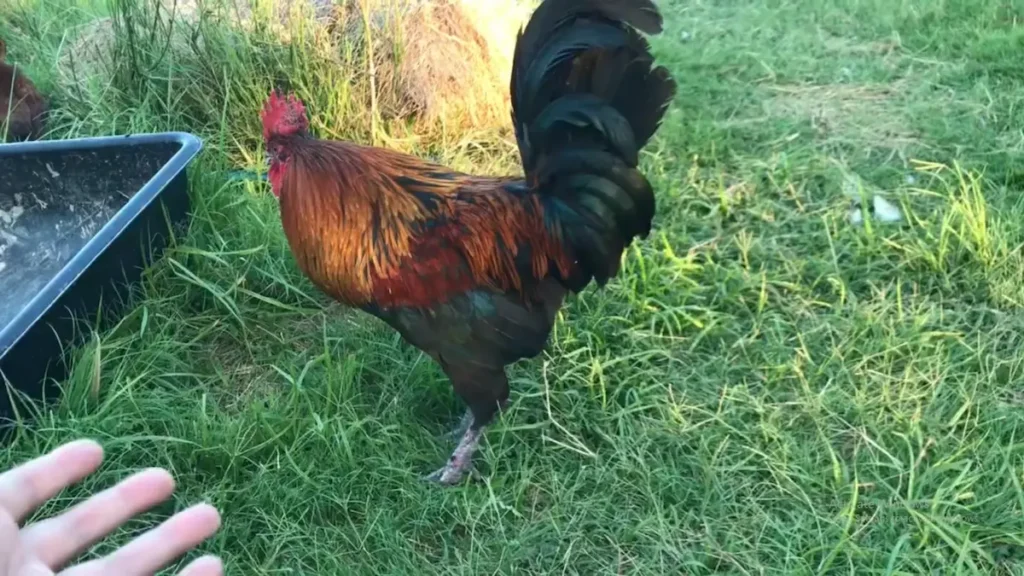
My neighbors sometimes complain about the crowing, yet the job of handling roosters is to guide them, not to throw them or cause hurt, because showing steady dominance is how you earn respect.
Over the years, I learned to think ahead and never run away, proving that you can tame even the toughest bird without being mean or dangerous. Whether it’s using work tools like a handle, keeping the flock calm, or reminding him you won’t be bothering the girls, the key is patience.
Sometimes I even laugh at the bark being worse than the bite, which helps me relax and keep my energy balanced. I once had four roosters and had to rid a few because of the chaos, but the process showed me that with persistence, the bird eventually won’t resist and will fall into the right order without losing control of his tongue or spirit.
How long taming can take
From my honest view, the time needed to train a rooster is much like obedience lessons for a dog. Some chickens learn quickly, while others move slowly, and both are normal. A session can last a minute or more, and sometimes I just sit down with my hens to give calm attention.
If he slips or shows biting or attacking habits, I remind myself it’s part of the behavioral cycle, and even a surprise setback can be handled with a positive approach.
Why periodic retraining is natural
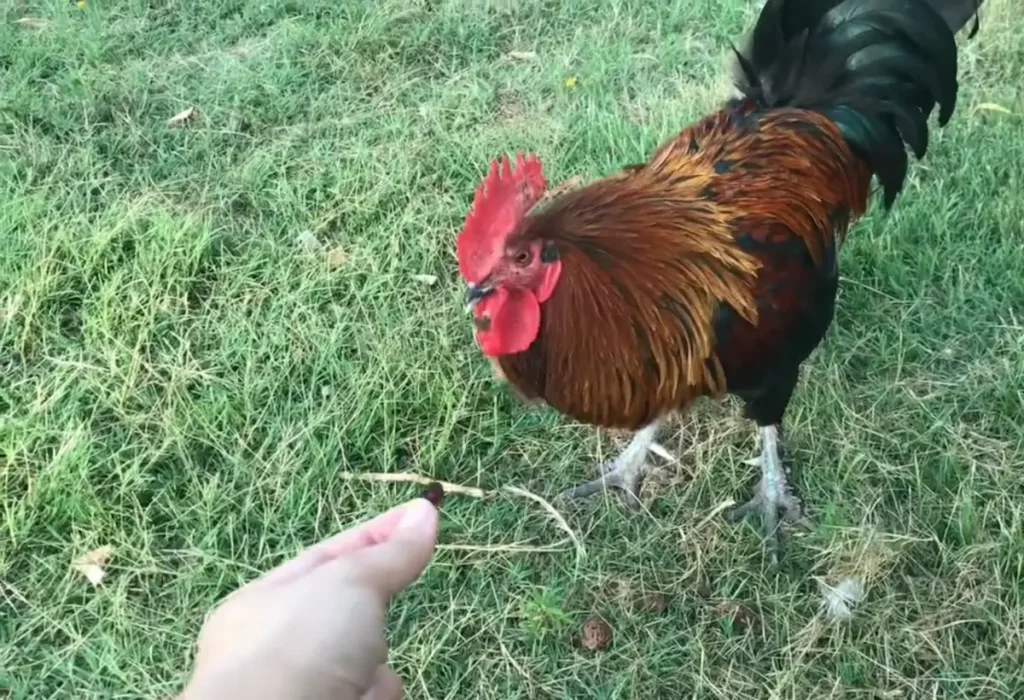
I usually commit to a schedule of about 10 minutes a day, and even when I stop for a week or return later, I’ve seen great improve-ments. At first, I may have worked in a half-assed way, but being more consistent in a controlled environment without distractions is far more effective.
When I approached it this way, I noticed major changes—the chicken grew sweet, would sit on my lap, and even follow me around. Retraining is natural; each day you may have to retrain, but with occasional effort the rooster becomes easier, and the training feels less difficult as both bird and handler improve.
Parting Thoughts on Training Aggressive Roosters with Kindness
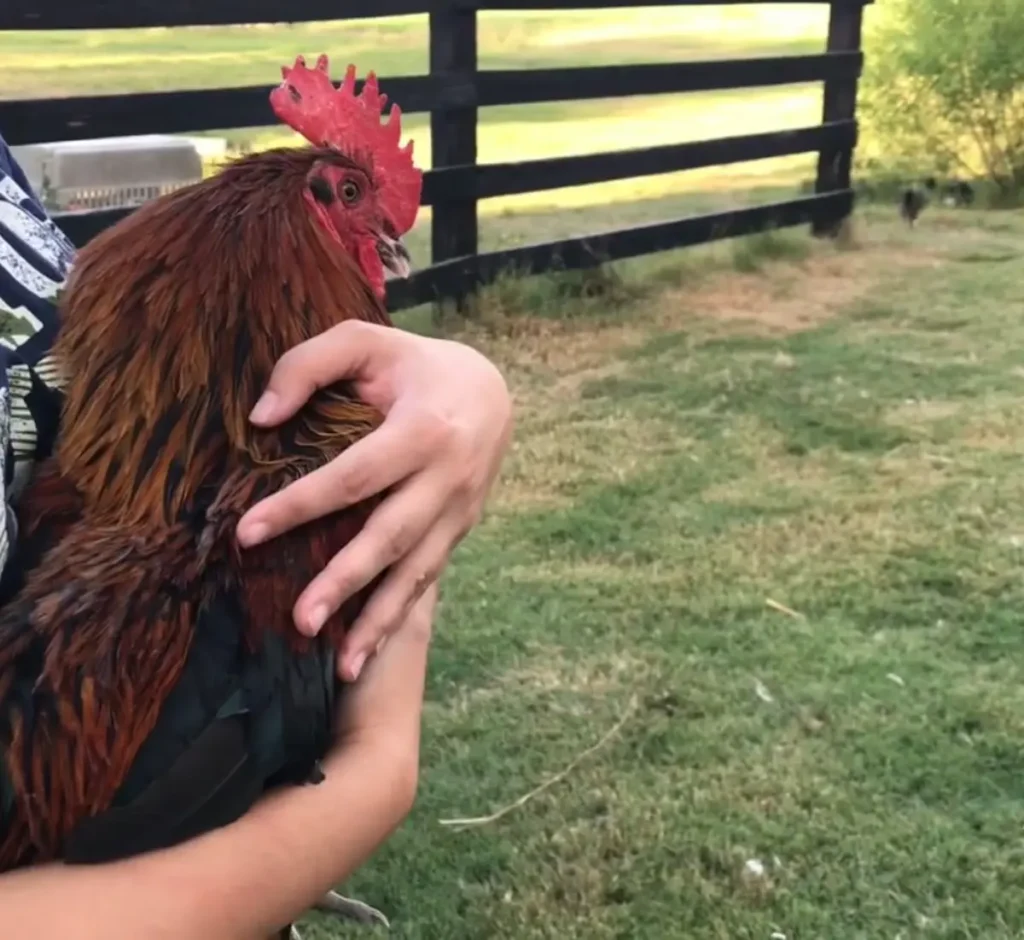
When I reflect on teaching a rooster, I notice that every fight or attacking behavior can be changed by steady steps and the right reward. A calm voice, kind demeanor, and food can shape his feelings, while avoiding a harsh reaction to attacks or a split-second show of anger prevents fear from taking over.
I’ve seen how a bond is formed when you are relaxed, and the rooster slowly learns to mirror your model of patience. With time, he begins considering you as a friend, not an enemy, because your partnership is based on good guidance, not punishment.
In this way, you gently redefine the relationship, showing him that being dominant or submissive is not the only path, but rather an amicable balance where trust strengthens daily. Even a baby chick shows hesitation, and in that sense you learn that every small thing matters.
By staying calm and relaxed, not letting fear or bad habits grow, the bird associates you with safety. Slowly the rooster accepts this new partnership, his flight response fades, and the training becomes a natural cycle of teaching, mirror learning, and gentle improvement.
Frequently Asked Questions
How to make a rooster trust you?
To build trust with a rooster, be a non-threatening leader through gentle and calm interactions. Use positive reinforcement with tasty treats, avoid outdated or unkind methods, and keep communication clear with speaking softly. By consistently spending quiet time in his vicinity and letting him approach on his own terms, you create a relationship of respect and fair dominance.
How to get your rooster to stop attacking you?
To stop a rooster from attacking, consistently establish dominance by calmly catching and holding him until he calms down, or by physically pushing him back without running away. Always wear protective gear in training and provide positive reinforcement with treats. If aggression continues, a separate pen plus consistency, patience, and retraining over time will demonstrate you are not a threat.
How do you bond with a rooster?
Start by offering treats from an open hand to your rooster, then gently reach to place your hands on his wings and pick him up. With steady practice of picking and putting him down, he will understand nothing bad will happen when being picked.
How do you assert dominance over a rooster?
To show dominance over a rooster, I place him gently on the ground on his back and hold his legs so he cannot run away. This helps him relax while also enforcing clear physical control, showing that I am the leader without causing harm.
Conclusion
In the end, taming a rooster is about patience, respect, and consistency—whether you’re learning to assert dominance, build trust through calm handling, or protect yourself without using violence.Each method, from understanding the pecking order to practicing gentle handling techniques, shows that roosters respond best when guidance is firm but kind.
Over time, with steady training, clear communication, and the right balance of partnership and discipline, even the most aggressive rooster can become a safe, respectful, and dependable part of your flock.


